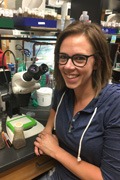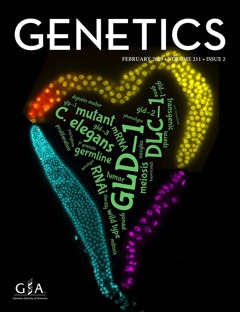What can the fruit fly tell us about the human eye?
Author(s):
Lindsay Lewellyn
Overview:
This laboratory exercise provides a hands-on way for students to explore the categories of experiments developed by Adams (2003) – “Show it, block it, and move it.” Students observe fruit fly pupae that are ectopically over-expressing the eyeless gene in the imaginal disc tissues using the GAL4/UAS system. The pupae contain ectopic eyes in the legs, wings, and antennae regions of the body. This observation demonstrates that the eyeless gene is sufficient to produce eye tissue. Students then read a primary research article (Halder 1995) in which this effect was reported and explore the idea that eyeless is both necessary and sufficient to induce eye formation. Emphasis is also placed on the proper development of an experimental hypothesis and prediction as well as how to communicate the importance of basic research using model organisms to a broad audience.
Genetics Concept(s) Addressed:
Nature of Genetic Material
Genetics of Model Organisms
Methods and Tools in Genetics
Core Competencies Addressed:
Students should be able to locate, read, and comprehend primary literature research papers on genetics topics.
Students should be able to generate testable hypotheses.
Students should be able to gather and evaluate experimental evidence, including qualitative and quantitative data.
Students should be able to effectively explain genetics concepts to different audiences.
Audience:
Undergraduate (upper level biology majors, but it can be adapted for use with non-majors)
Activity Type:
Laboratory Exercise
Activity Length:
~2.5-3 hours, but could be shortened
Keywords:
Necessary and Sufficient, Scientific Method, Model Organism, Drosophila, GAL4/UAS
Citation:
Lewellyn, L. (2018). What can the fruit fly tell us about the human eye? Genetics Society of America Peer-Reviewed Education Portal (GSA PREP); 2018. 002; doi: 10.1534/gsaprep.2018.002



